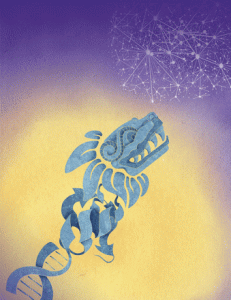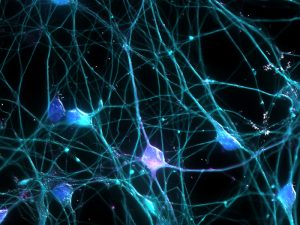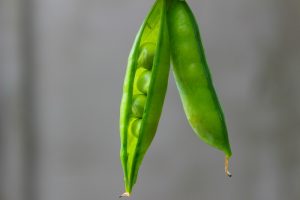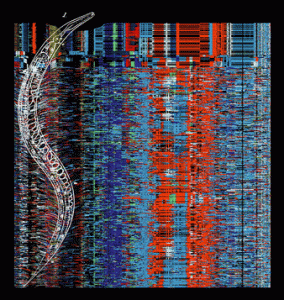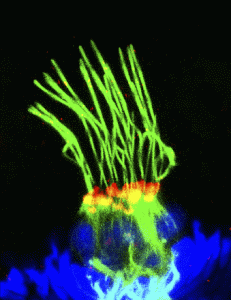Enter your address to receive notifications about new posts to your email.
Science & Publishing
-
Science & Publishing
January GENETICS Highlights
Check out the January issue of GENETICS by looking at the highlights or the full table of contents! ISSUE HIGHLIGHTS Improving metabolic health through precision dietetics in mice, pp.399–417 William T. Barrington, Phillip Wulfridge, Ann E. Wells, Carolina Mantilla Rojas, Selene Y. F Howe, Amie Perry, Kunjie Hua, Michael A. Pellizzon, Kasper D. Hansen, Brynn H. Voy, Brian J. Bennett, Daniel…
-
Science & Publishing
Zebrafish offer hope for understanding severe form of epilepsy
The prolonged and severe seizures suffered by those with pyridoxine-dependent epilepsy (PDE) can lead to brain dysfunction and death if not treated. Standard antiepileptic drugs are typically ineffective for people with this rare genetic disorder—instead, they need high doses of vitamin B6 in the form of pyridoxine or pyridoxal 5′-phosphate. But even with this supplementation,…
-
Science & Publishing
Sperm and eggs don’t always join at random
Choosing a mate is hardly random. During courtship in the diploid phase of our life cycle, we often employ elaborate rituals and biological signals to attract and assess potential mates. But after that, we usually assume that eggs and sperm choose each other randomly at fertilization. Or so says Mendel’s First Law. But sometimes, Joseph…
-
Science & Publishing
Circulomes vary based on cell type
In the 1980s, scientists first noticed circles of DNA interspersed among the normally linear chromosomes of eukaryotic nuclei. Little is known about these molecules, which are called extrachromosomal circular DNA (eccDNA). Variation in eccDNA appears to be biologically significant; development of an organism often comes with increased numbers of eccDNA, for example, and certain types…
-
Science & Publishing
Benign yeast turn into filamentous pathogens in different ways
The yeast Candida albicans lives on and even inside many of us. Most of the time, its silent presence goes unnoticed, but this fungus can turn on its host, causing infections ranging in severity from annoying to life-threatening. For the yeast to become pathogenic, some of the C. albicans must transform from small, round cells…
-
Science & Publishing
New in G3: software and data resources, overdominance in flower color, and histone mutant libraries
Check out the December issue of G3! Table of Contents Software and Data Resources ARSDA: A New Approach for Storing, Transmitting and Analyzing Transcriptomic Data Xuhua Xia G3: Genes, Genomes, Genetics December 2017 7: 3839-3848; DOI: https://doi.org/10.1534/g3.117.300271 rSalvador: An R Package for the Fluctuation Experiment Qi Zheng G3: Genes, Genomes, Genetics December 2017 7: 3849-3856; DOI: https://doi.org/10.1534/g3.117.300120 Investigations…
-
Science & Publishing
December GENETICS Highlights
Check out the December issue of GENETICS by looking at the highlights or the full table of contents! ISSUE HIGHLIGHTS Gene Conversion Facilitates Adaptive Evolution on Rugged Fitness Landscapes, pp. 1577–1589 Philip Bittihn and Lev S. Tsimring An important question in evolutionary theory is how adaptation might be hindered on a rugged fitness landscape in the presence of strong selection that…
-
Science & Publishing
New in G3: maize mutants, fungus filamentation, and more
Check out the November issue of G3! Table of Contents Mutant Screen Report Genetic Screening for EMS-Induced Maize Embryo-Specific Mutants Altered in Embryo Morphogenesis Dale C. Brunelle, Janice K. Clark, William F. Sheridan G3: Genes, Genomes, Genetics November 2017 7: 3559-3570; DOI: https://doi.org/10.1534/g3.117.300293 Genomic Selection Genomic Prediction Within and Across Biparental Families: Means and Variances of Prediction Accuracy…
-
Science & Publishing
Stressed-out worms hit the snooze button
When you catch a nasty cold, curling up in bed to sleep may be the only activity you can manage. Sleeping in response to stress isn’t a uniquely human behavior: many other animals have the same reaction, and it’s not clear why. While the circadian sleep that follows the pattern of the clock has been…
-
Science & Publishing
November GENETICS Highlights
Check out the November issue of GENETICS by looking at the highlights or the full table of contents! ISSUE HIGHLIGHTS Ethanol stimulates locomotion via a Gas-signalling pathway in IL2 neurons in Caenorhabditis elegans, pp. 1023–1039 James R. Johnson, Mark R. Edwards, Huw Davies, Daniel Newman, Whitney Holden, Rosalind E. Jenkins, Robert D. Burgoyne, Robert J. Lucas, and Jeff W. Barclay Alcohol…
-
Science & Publishing
Behind the Cover: Genetic ancestry in Colombia
Over three centuries, as many as a million enslaved people were shipped to the Colombian port of Cartagena. From this hub of the slave trade, European colonists took Africans to labor in many places across the Americas, including the gold mines of the Chocó region. Today, people from Chocó often proudly identify as Afro-Colombian, while…


